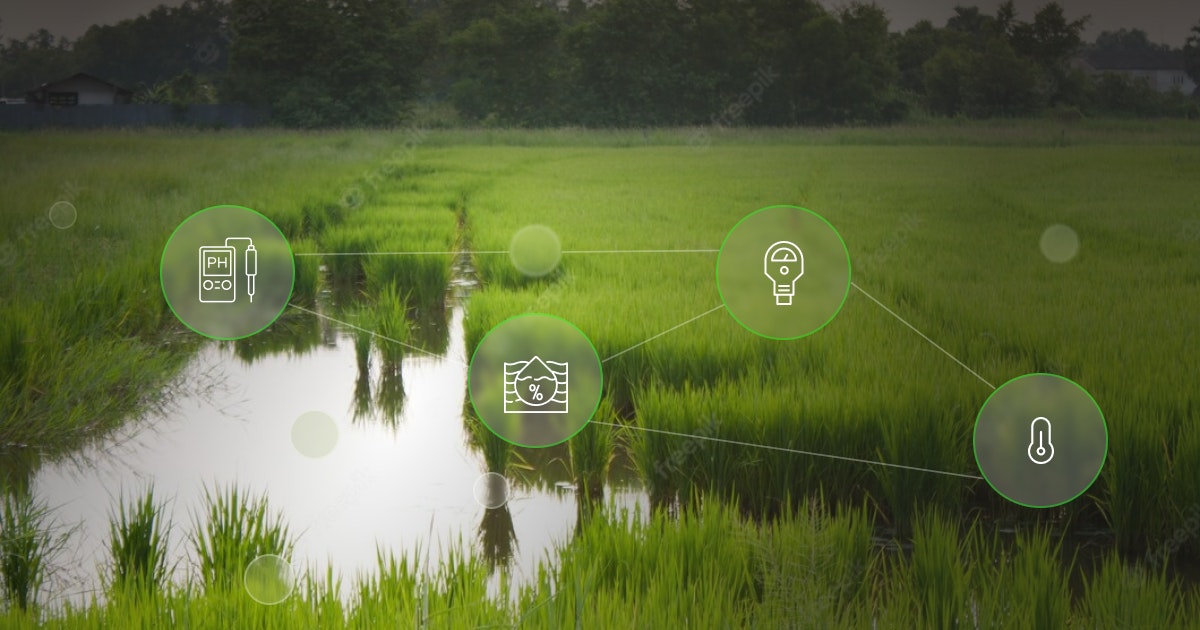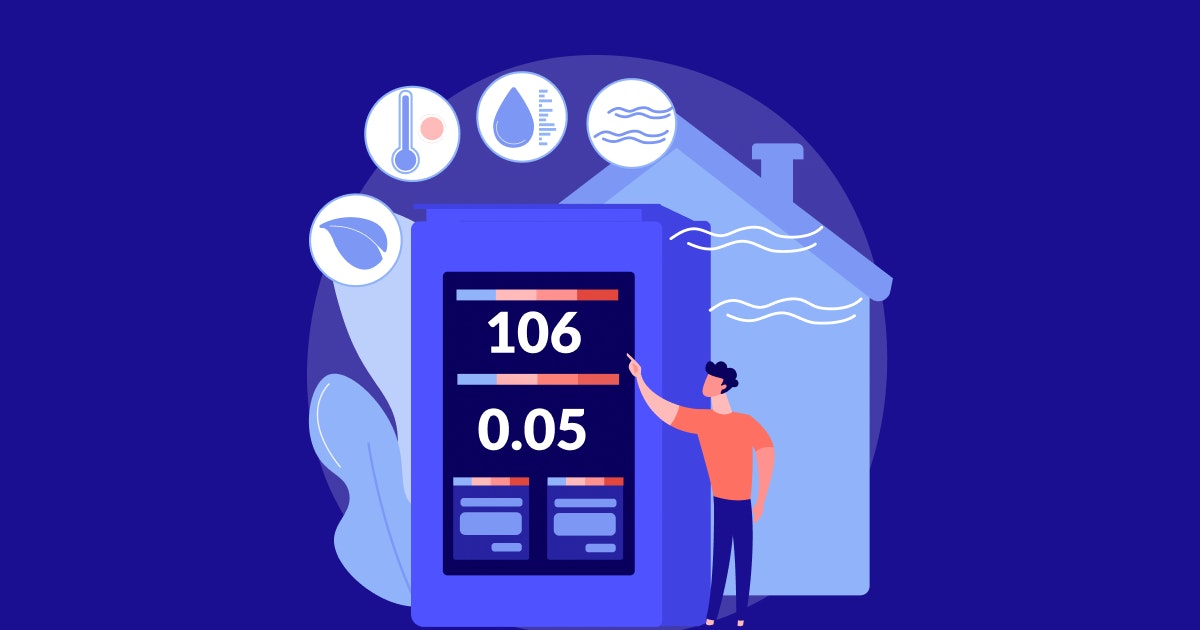Table of Content
The world population will cross 9.6 billion by 2050, increasing the food demand by almost 50%
However, with shrinking arable land and depleting freshwater sources, yields have decreased. This has posed a challenge to the global agriculture industry.
Conventional farming methods are not sufficient to fill the demand-supply gap and feed a huge population. Therefore, it becomes critical for the agriculture industry to adopt new technologies such as IoT (Internet of Things).
Over the years, the Internet of Things (IoT) has radically transformed different industrial sectors, and agriculture is no exception. According to a report, the projected growth of the global agriculture IoT market will be $28.56 billion by 2030, with a registered CAGR of 9.62% from 2022 to 2030.
Smart Farming Using IoT Solutions - The Future of the Agriculture Industry
With data-driven insights and precise techniques, smart farming enables farmers to make informed decisions, mitigate environmental impact, augment crop yields, and reduce waste.
How Water Monitoring Improves Yield Production and Quality?
Water is a critical natural resource for agricultural production. However, sources of freshwater are limited! According to a report, about 85% of global water resources are used for agriculture and irrigation.
The rapid depletion of freshwater resources and rising pollution levels are affecting irrigation water quality.
High-quality irrigation water is essential for abundant yields, improved crop health, and maintenance of soil nutrients. This brings us to our next point:
Which Parameters Determine the Water Quality for Irrigation Purposes?
The concentration and chemical composition plays a significant role in determining the quality of irrigation water. Excessive pH values in the water can make the soil more acidic, causing the yields to decline subsequently. Similarly, maintaining water temperature at a prescribed level results in healthy and high-quality yields.
It is crucial to constantly monitor water quality parameters to ensure irrigation systems function properly. Moreover, low-quality irrigation water can destroy soil health and stall crop production.
Here are some of the major parameters in water quality monitoring:
Right pH Levels - the Key to Healthy Crops
The pH levels in the irrigation system determine the water’s acidity and alkalinity properties. Usually, soil nutrients remain intact when the pH is within the range of 5.5-6.5.
A lower pH level means the water is more acidic and can cause the following damages:
- Low pH level makes it difficult for the crops to absorb certain nutrients. For example, the amount of phosphorus and potassium diminishes in acidic soil leading to restricted growth and lower yields.
- Moreover, acidic soil promotes the rapid formation of aluminum and manganese ions which can result in increased toxicity.
- Plus, low pH levels can affect the soil structure causing the particles to clump together. This makes it hard for the water and other nutrients to penetrate the soil, leading to low-grade yields.
Similarly, elevated pH levels mean the water is more alkaline, causing the accumulation of harmful calcium and magnesium ions. It becomes difficult for the roots to absorb essential nutrients from the soil, thus lowering production.
Also, alkaline soil can hinder the growth of some beneficial soil microbes, which are crucial for disease control and nutrient recycling.
Let's integrate IoT for water quality monitoring!
Let's Get StartedProper Water Salinity Positively Impacts the Yields
Maintaining salinity levels in irrigation water is a major point of concern for the agricultural industry. Water salinity refers to the concentration of salts in irrigation and soil.
The disproportionate salt content in the water and soil can adversely affect the yields, contaminate soil quality, and pollute the water tables.
This is what happens when salinity is too low or too high:
- Salt build-up can block pipes, valves, and other irrigation components. Consequently, this raises the maintenance and repair costs for farmers, further lowering the irrigation system’s efficiency.
- In addition, accumulated bicarbonates and carbonates clog the nozzles of pesticide sprayers, water pipes, and drip tubes. This can raise the repair or replacement costs for the farmers.
- Excessive concentrations of salt ions in the soil can burn the roots and gradually destroy the crop, further impacting annual harvests.
- Plus, high water salinity can negatively affect soil structure. Salts clutter soil particles and reduce their permeability.
Monitor Alkalinity in Irrigation Water
A higher pH value in water turns into alkaline. And increased alkalinity of the water can affect the availability of nutrients and mineral solubility, hindering yield production.
This is what happens when alkalinity levels go beyond their prescribed level:
- When the alkaline level exceeds, it can increase the salinity of irrigation water. This reduces the availability of certain minerals, leading to deficiencies in crops.
- Moreover, high alkalinity can change the chemical composition of the soil. Contaminated or low-quality soil prevents the crop from drawing up necessary nutrients resulting in poor yields.
Improve Yields with the Right Water Temperature
Abnormal water temperature can harm the quality and quantity of harvests.
Lower water temperature can reduce soil warmth. This decelerates seed germination and inhibits early plant development. Similarly, when the temperatures are too high, it destroys nutrition and negatively impacts agricultural products.
Moreover, higher water temperatures don’t have enough dissolved oxygen. Lowered oxygen levels make the crops vulnerable to diseases, further hampering their growth.
Leveraging IoT Solutions for Improved Water Quality Monitoring and Business Bottom Line
Manual methods to evaluate the quality of irrigation water are not only time-consuming but also cost-intensive. Moreover, the process is prone to data inaccuracy and human errors.
With the IoT-enabled remote water monitoring system, evaluating different water quality parameters in real-time becomes less time-consuming, precise, and streamlined.
Here are some IoT solutions to improve irrigation water quality monitoring and boost your profits:
Water Flow Monitoring
Freshwater resources are scarce! Unchecked water supply to the farms leads to the wastage of valuable natural resources. Plus, overwatered farmlands can damage crops, impacting their growth.
IoT sensors provide real-time data about water usage and flow rates. When equipped with this data, farmers can identify the areas where water is over consumed or wasted.
Moreover, the IoT valves automatically turn off the water supply when the flow is too high. This keeps a check on water overconsumption and allows the farmers to save on energy and water bills.
Early Leakage Detection
Pipe bursts or leakages are one of the most pressing problems for farmers. It can cause heavy loss of irrigation water and even flood the fields, further ruining the standing crops.
Smart IoT sensors ensure early leakage detection enabling the farmers to repair faulty pipes and lower water wastage. Also, IoT triggers an alert to notify the farmers about a possible leak helping them save a sizable amount on maintenance or replacement costs.
Remote Monitoring for Irrigation Water Quality
Monitoring water quality for irrigation purposes is crucial to improve yield quality.
IoT-enabled precision sensors collect and transmit data to a centralized database or cloud.
Farmers can access the data to monitor and identify variations in the water quality parameters such as salinity, pH levels, temperature, or alkalinity. They can use this data to prevent crop damage, and soil degradation and mitigate the risk of disease.
Smart Irrigation Using IoT-Enabled Sensors
An abnormal pattern or variation in the quality parameter of water indicates a problem. Manual monitoring is not feasible, since the results can take weeks to come out.
However, the advent of advanced IoT sensors, drones, GPS systems, and GIS has made data visualization simple and quick through automated reports.
Moreover, farmers can receive alerts via mobile phones if there are unusual variations in the water quality parameter. This helps them to take swift action to prevent any damage to the yields.
Optimize Your Farm's Water Usage with IoT Solutions!
Let's Get StartedFinal Word
IoT-enabled solutions provide better control over water quality monitoring data, helping farmers optimize agricultural practices, improve yields, and make farming more profitable.
Our professionals have the right qualifications and skill set to deliver outstanding results within a quick turnaround time.
Book a Free 45-minute Consultation with Our IoT Experts Today! If you are looking for ways to get good harvests every season and achieve your bottom line using secure and scalable IoT solutions





